Mazda wouldn’t be caught dead following the crowd, but it finally broke that tradition with the CX-30. You could easily see the similarity with brands like Audi, using a uniform design direction across their lineup. That’s why it feels as if there’s a CX-30 inside the CX-5 or you could crack open the CX-30 and find a CX-3 nestled within. It’s a good thing, then, that they all look really good. It’s important because the CX-30 faces tough competition with stylish SUVs like the Audi Q3 and BMW X2.
The 2023 Mazda CX-30 stands as a refined and sporty contender in the subcompact SUV category. It offers excellent value with its eye-catching aesthetics and a wealth of standard features, albeit at a slightly higher price point compared to many rivals. In fact, the only notable upgrade the 2024 model has over the current one is the introduction of a Carbon Turbo edition, boasting a desert/safari-inspired aesthetic, sand metallic paint, a tan interior, and a turbocharged engine.
So, unless you're particularly drawn to the newest kid on the block, sticking with the base four-cylinder engine remains the smart choice for the best value, as the turbo option, while spirited, comes with a heftier price tag. According to US News & World Report, the CX-30 is the best subcompact SUV for 2023/24. Let’s see why.
Related Reading: The Bold And Luxurious 2023 Mercedes-Benz GLB-Class Redefines The SUV Experience: Everything You Need To Know
How Mazda CX-30 Got The Top Spot In The Subcompact SUV Class For 2023/24
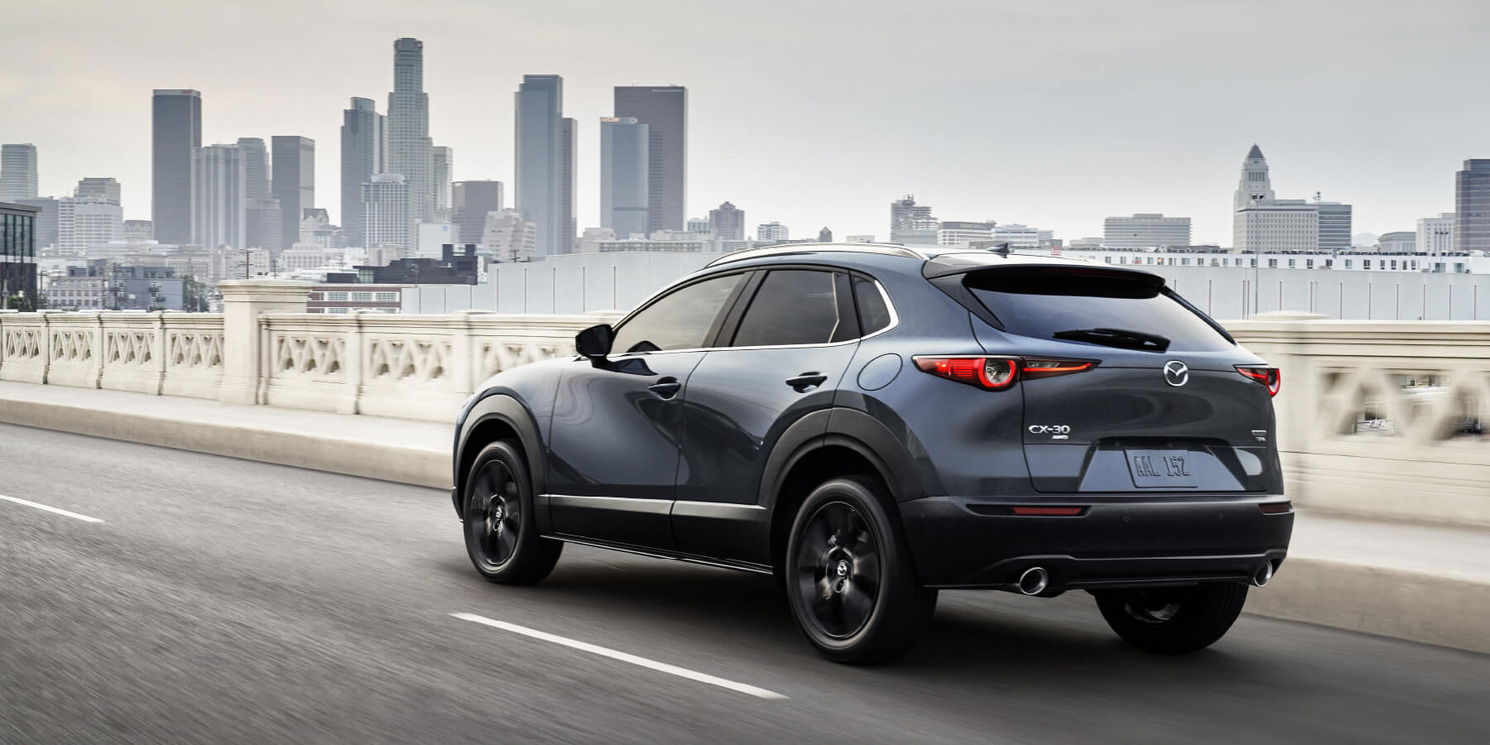
The 2023 Mazda CX-30 holds the prestigious #1 ranking in the Subcompact SUVs category. It's currently a finalist for the US News & World Report’s 2023 Best Subcompact SUV for the Money. With a commendable score of 8.6 out of 10, based on a comprehensive evaluation of 18 research and data elements from various sources, it's clear that the CX-30 excels in its class.
In a week-long test drive, Senior Automotive Correspondent John Vincent found the 2023 Mazda CX-30 Turbo to be the top choice among subcompact SUVs, offering the versatility of a crossover along with the handling of a compact car.
Even the 191-hp base engine proved impressive, while the optional turbocharged engine takes things to a whole new level, albeit at a higher cost. Although the turbo's price puts it in competition with more powerful rivals like the Hyundai Kona N, Vincent believes that the Mazda's comfort and upscale cabin set it apart.
In other words, the CX-30 holds its own in the subcompact SUV segment even without the turbo treatment, competing effectively with models like the Kia Soul, Honda HR-V, Kia Seltos, and standard versions of the Kona.
Summarily, the 2023 Mazda CX-30 combines quality and value, impressing with agile handling and an optional turbocharged engine. Mazda used upscale materials for the cabin, complete with a wealth of infotainment and active safety technology. It’s hard to hate this subcompact winner.
How 2023 Mazda CX-30 Compare To The Competition
Mazda CX-30 vs. Hyundai Kona:
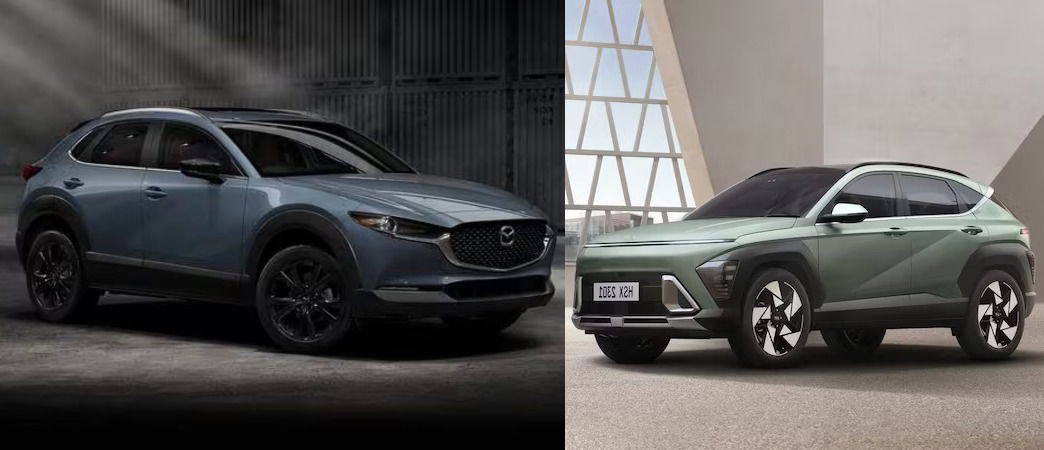
Both the CX-30 and Hyundai Kona offer exceptional value with generous standard features and competitive pricing within the subcompact SUV segment. Both vehicles provide well-balanced rides and nimble handling.
However, they share a common limitation – a relatively compact cargo space compared to some rivals in their class. The CX-30 stands out with a more refined cabin, boasting quality materials and a roomier second row for added comfort.
On the other hand, the Hyundai Kona excels in infotainment system usability and achieves excellent fuel economy.
Mazda CX-30 vs. Mazda CX-5:

The CX-5, as a compact SUV, offers more cargo space and cabin room than the CX-30 but comes at a higher price point. Both Mazda models share a spirited performance, equipped with similarly powerful standard and available engines, and they excel in terms of agile handling.
Their interiors showcase Mazda's dedication to aesthetics, with well-appointed designs and a shared set of features. The choice between the CX-30 and CX-5 depends on your specific needs – if you prioritize a bit more space and are willing to invest at a higher price point, the CX-5 may be the right fit.
However, the CX-30 remains an excellent option for those seeking a balance between size, performance, and affordability.
The Engine And Performance
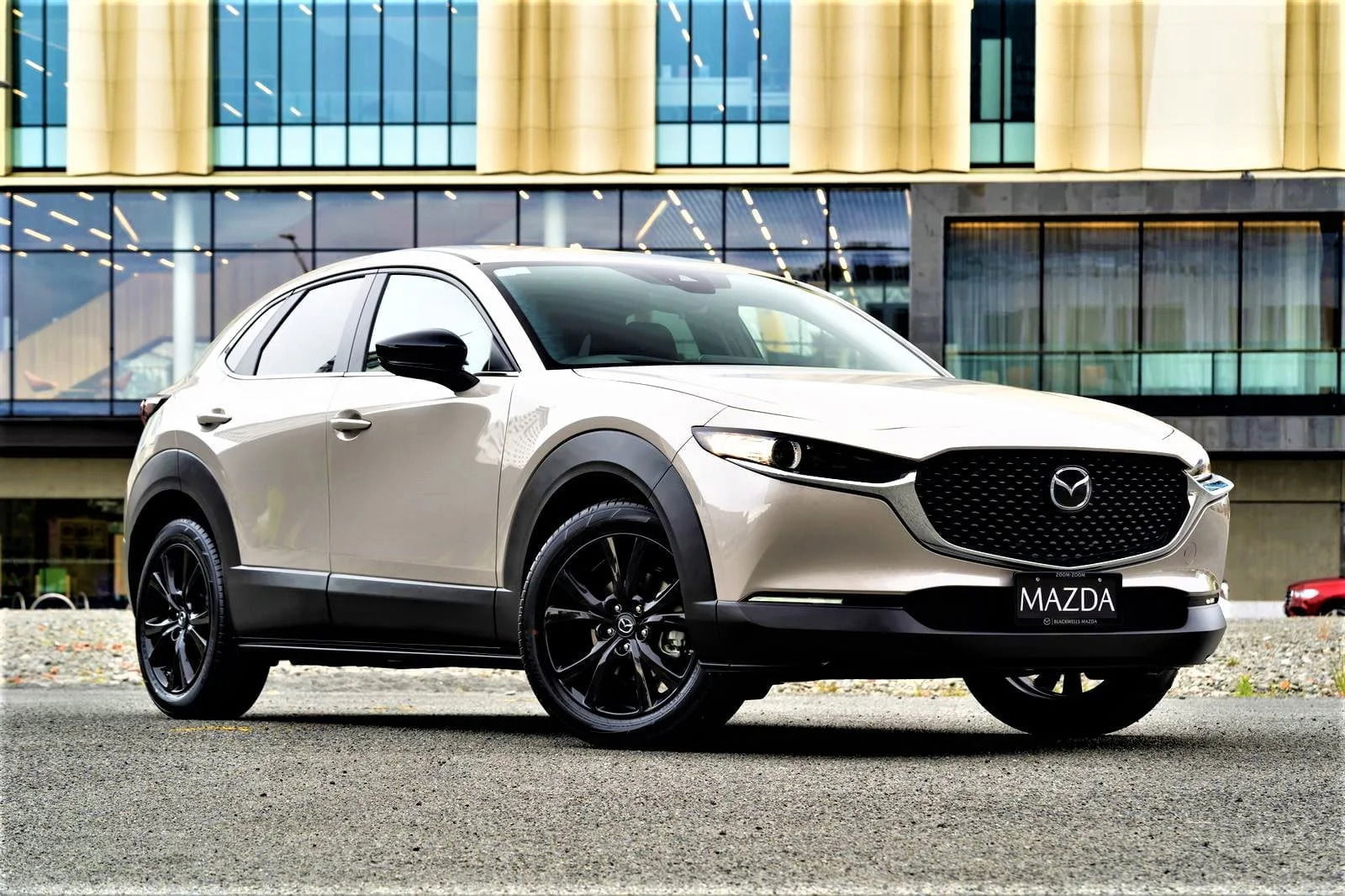
The standard powerplant is a 2.5-liter four-cylinder engine producing a decent 191 horsepower. Paired with a six-speed automatic transmission, this dynamic duo ensures that gear selection is astutely managed, adapting seamlessly to varying driving conditions.
Vincent mentioned the CX-30’s propensity to slap a smile on your face when tackling twisty roads. For an extra kick of power, there's the optional turbocharged 2.5-liter engine cranking out 250 horsepower.
If you have a soft spot for the Mazda 3 hatchback, you'll discover the CX-30 to be equally nimble, athletic, and downright enjoyable to drive. Its precise steering and graceful handling on twisty roads provide an exhilarating experience, delivering a reassuring sense of stability during long cruises.
In separate track test, the CX-30 accelerated to 60 mph in a respectable 8.1 seconds, slightly trailing behind turbocharged competitors like the Kona but significantly outpacing non-turbocharged SUVs such as the Nissan Rogue Sport and the Subaru Crosstrek.
Opting for the CX-30 with the optional turbocharged engine offers substantially quicker acceleration, accomplishing a brisk 5.8-second dash.
The Road Manners

The CX-30 embodies Mazda's well-established formula of combining spirited handling with a responsive engine, effectively elevating it in the ranks of the small SUVs. Its responsiveness extends to intuitive steering and the added confidence of all-wheel drive, especially in slippery conditions.
While the base engine reportedly feels a tad sluggish, it's rivals aren’t that much better. The accelerator response is sharp for an engaging driving experience. The transmission can occasionally lag behind when you demand a surge of power, but it's generally manageable.
The CX-30 is a golden boy on the highway, thanks to one of the quietest cabins in its class. While the dual-zone climate control might not be Arctic-cold for those who prefer frigid temperatures, the rear vents ensure that rear passengers receive their fair share of ventilation.
The heated seats may take a moment to warm up, but once they do, they offer a pleasantly toasty experience.
The Interior

Inside the CX-30, Mazda's trademark simplicity and elegance blends seamlessly to create an ambiance akin to European luxury. The infotainment system is thoughtfully arranged, and navigating through the controls, facilitated by the rotary knob, is generally straightforward.
However, the absence of touchscreen functionality for Apple CarPlay and Android Auto is rather painful. Similarly, the CX-30 slacks behind its rivals in terms of cargo capacity, which isn’t new with Mazda.
Despite the CX-30’s subcompact classification, the SUV defies expectations with a surprisingly roomy cabin. Passengers up to 6 feet tall will find ample space in all directions at the front. While the CX-30 technically accommodates five passengers, the rear seat prioritizes the comfort of two average-sized adults.
However, the CX-30's distinctive swooping design introduces some trade-offs. You can expect getting in and out of the vehicle to not be as effortless as it is with boxier competitors, and rear visibility is a bit problematic thanks to the SUV’s thick rear pillar and relatively small rear window.
Related Reading: Mazda Is Reportedly Working On A Next-Gen CX-5 SUV Due By 2025: What We Know So Far
The Tech
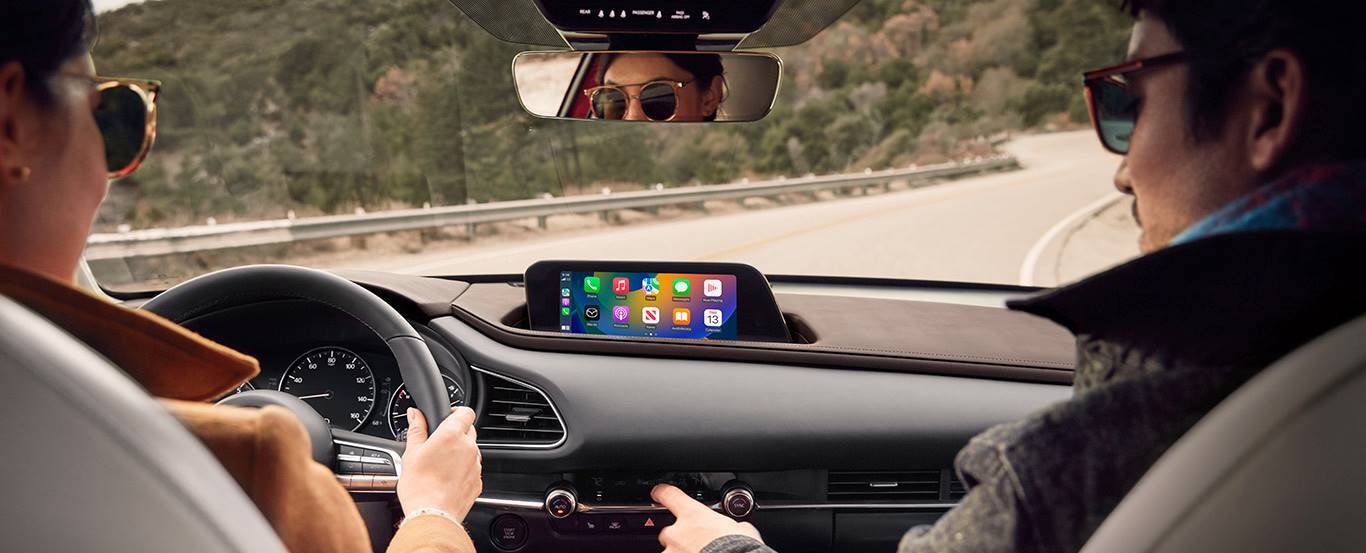
As an entry-level mainstream SUV, the CX-30 arrives generously equipped, offering a compelling array of features. Continuing from previous models, every CX-30 variant includes automatic LED headlights, rain-sensing wipers, an electronic parking brake, and the convenience of push-button start.
The base model features an 8.8-inch infotainment screen as standard equipment, complemented by a 7.0-inch instrument display. This setup ensures a user-friendly interface for accessing various functions.
The audio experience is enhanced by an eight-speaker sound system, and for seamless smartphone integration, both Apple CarPlay and Android Auto compatibility come standard. Furthermore, the 2023 Mazda CX-30 offers a range of enticing options as extra convenience features.
These include curve-adapting headlights, a power liftgate, a panoramic moonroof for a touch of open-air elegance, a wireless charging pad to keep your devices powered up, and heated front seats that come with an eight-way powered driver's seat.
Moreover, you can opt for a head-up display to keep essential information in your line of sight, and for audiophiles, a 12-speaker Bose premium audio system is available.
Fuel Economy
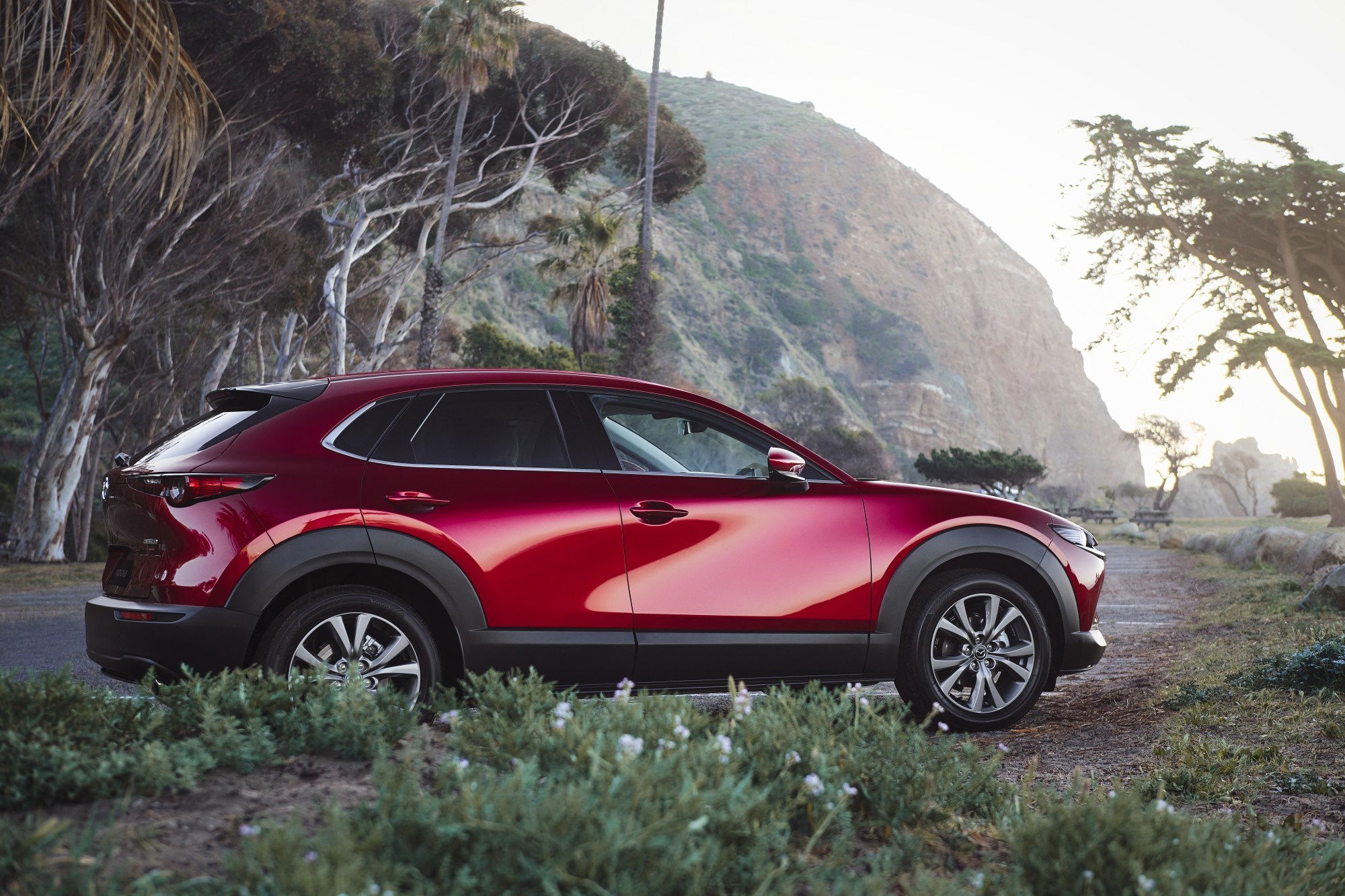
The non-turbocharged CX-30 delivers impressive fuel-economy estimates of 26 mpg in the city, 33 mpg on the highway, and a combined rating of 29 mpg. With the turbocharged engine, the CX-30's fuel efficiency remains competitive.
The EPA estimates for the turbocharged variant come in at 22 mpg in the city, 30 mpg on the highway, and a combined rating of 25 mpg. In real-world testing by Car and Driver, the CX-30 Premium achieved a highway fuel economy of 31 mpg during a 75-mph highway test route.
This result precisely matched its EPA rating, highlighting its reliability in meeting its fuel-efficiency promises.
Safety Features And Rating
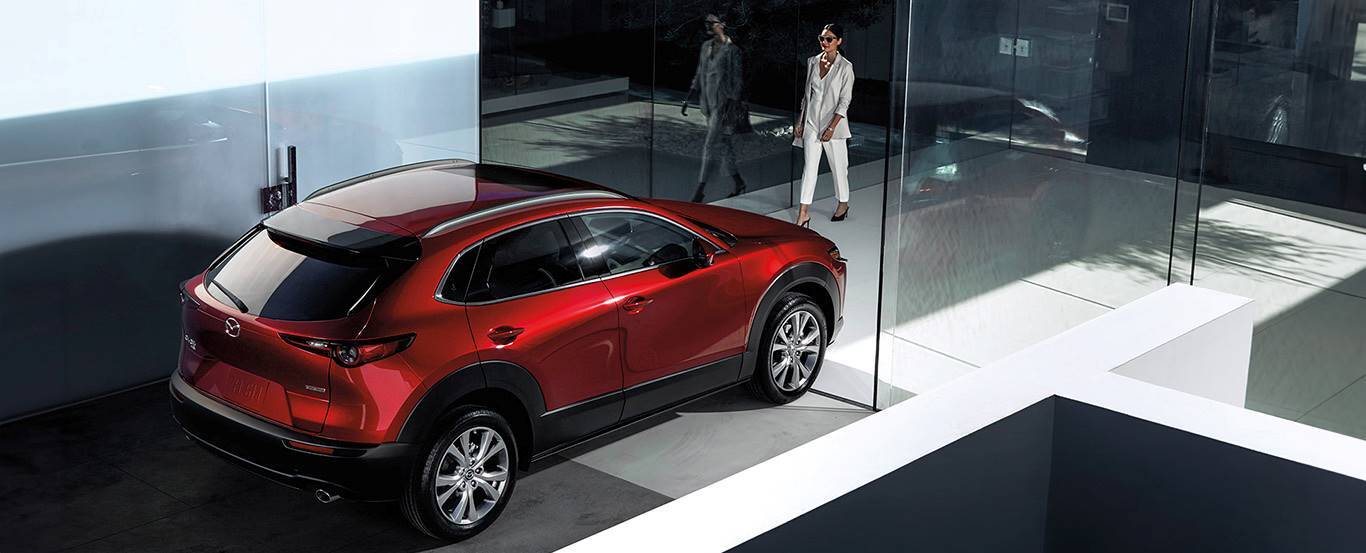
The 2023 Mazda CX-30 earned the IIHS’s coveted Top Safety Pick, with “Good” scores in all categories of crashworthiness, crash avoidance and mitigation, and seat belts and child restraints, among others.
Throughout its presence in the lineup, the Mazda CX-30 has consistently secured recognition for its top-tier safety features. It has consistently received at least the IIHS' coveted Top Safety Pick award.
For both the 2021 and 2022 model years, it achieved the even more prestigious Top Safety Pick+ designation. Additionally, the CX-30 has earned the highest safety rating from the NHTSA, boasting a five-star overall safety rating.
Notably, many of the CX-30’s impressive safety features are now standard equipment, including adaptive high-beams, a lane-keeping system, adaptive cruise control, and automatic emergency braking.
Compact And Subcompact: What’s The Difference?
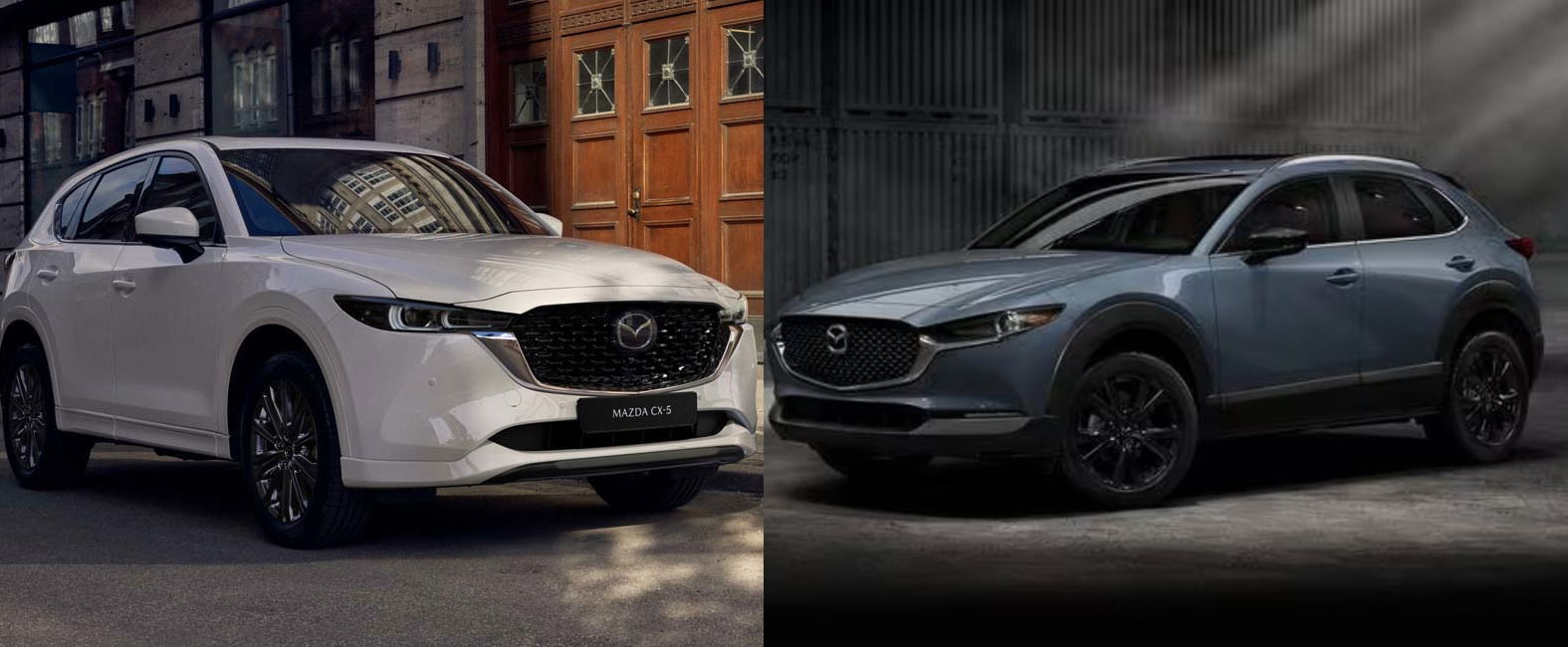
The main difference between a compact SUV and a subcompact SUV lies in their size, typically around 175 inches (length) for subcompacts and over 180 inches for compacts. The dimensions impacts various aspects of the vehicle, including space, fuel efficiency, and price.
Since compact SUVs are larger than subcompact SUVs, they typically have more interior space and cargo capacity. Consequently, compact SUVs are typically more expensive than subcompact due to their larger size and additional features.
They also have slightly lower fuel efficiency compared to subcompact SUVs due to their larger engines and higher weight. Perhaps, the strongest lure of subcompacts for many shoppers is their typically better agility and easier maneuverability, making them well-suited for city driving and parking.
In contrast, subcompacts are probably not the better candidate if you need a small SUV with great towing capabilities.
Ultimately, the choice between a compact and a subcompact SUV depends on your specific needs and preferences. If you require more space and are willing to pay a bit extra for it, a compact SUV may be the better choice.
On the other hand, if you value affordability and maneuverability in urban settings, a subcompact SUV might be a more suitable option.